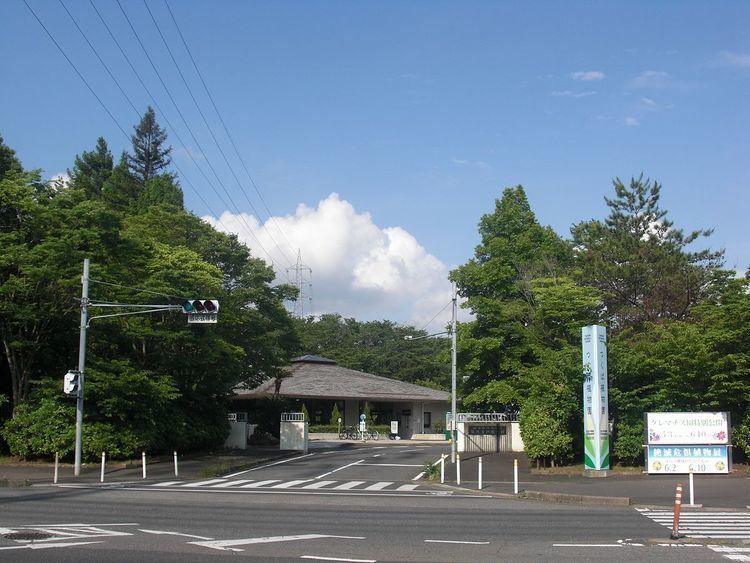Phone +81 29-851-5159 | ||
 | ||
Hours Open today · 9AM–4:30PMSunday9AM–4:30PMMondayClosedTuesday9AM–4:30PMWednesday9AM–4:30PMThursday9AM–4:30PMFriday9AM–4:30PMSaturday9AM–4:30PMSuggest an edit Similar Tsukuba EXPO Center, 地図と測量の科学館, Japan Aerospace Explorati, Tsukuba, 食と農の科学館 | ||
The Tsukuba Botanical Garden (筑波実験植物園, Tsukuba Jikken Shokubutsuen, 14 hectares, 36 acres) is a major botanical garden near the University of Tsukuba at 4-1-1 Amakubo, Tsukuba, Ibaraki Prefecture, Japan. It is open daily except Mondays; an admission fee is charged.
As a research branch of the National Museum of Nature and Science, the garden is one of Japan's foremost botanical research facilities and provides public education. It currently contains about 5000 taxa of domestic and exotic plants from temperate and tropical regions around the world, with a particular emphasis on vascular plants of central Japan, East Asian ferns, Cycadaceae, Colocasia, and South American orchids.
The garden's outdoor collections are arranged into the following sections: Evergreen Broad-leaved Forest, Temperate Coniferous Forest, Warm-temperate Deciduous Broad-leaved Forest, Cool-temperate Deciduous Broad-leaved Forest, Shrubs, Sandy and Gravelly, Montane Grassland (High Altitudes), Montane Grassland (Low Altitudes), Rookeries (Coastral), Rookeries (High Altitudes), Marsh Plants, and Hygrophytes and Aquatic Plants.
The garden contains three greenhouses:
As of 2007 the garden supported eight researchers in plant taxonomy, with ongoing studies in cytotaxonomy to determine the number and shape of chromosomes, molecular biology based on DNA sequencing, chemotaxonomy using secondary metabolites, and plant morphology based on branching systems and pedology.
